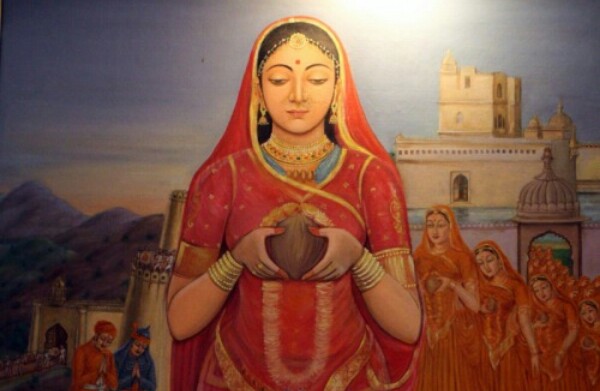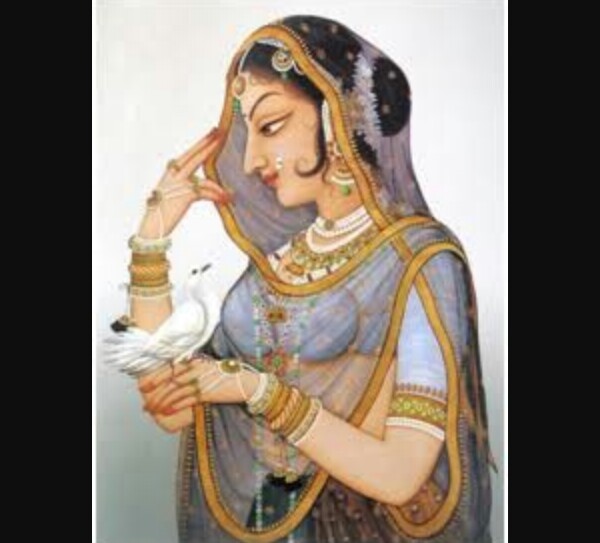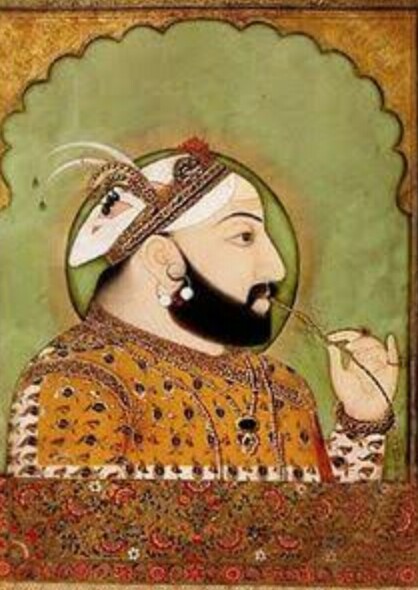Rani Padmini was the wife of King Raval Ratan Singh(belongs to Sisodiya clan) of chittor, she was known as Rani padmawati in history. Currently, she is in the news because a director Sanjay leela Bhansali make a film on Rani padmawati apparently, the name of the movie is Padmawati.
So, what was great about the queen of chittor?? If you think about beauty and bravery you’re absolutely right but the sacrifice made her great. Like every Indian movie the story of Padmini has three main lead a beautiful girl Rani Padmini, a brave boy Raja Raval Ratan Singh and a villain Sultan Ala-ud-din Khilzi. A tale of lust & war, unfortunately ended with a tragedy.
The story of Rani Padmini is mentioned in Padmavat, an epic poem written by Malik Muhammad Jayasi he renamed her Padmawati.
Introduction of King and queen of chittor-
Padmini spent her life under the care of her father Gandharvsena and mother Champavati. Her father arranged a swayamvara (it’s a ritual where girl has a right to choose her husband) to wed his beautiful daughter to an able man and invited all the Hindu kings and Rajputs (request to marry her by showing their eligibility). King Rawal Ratan Singh of chittor married her second wife Rani Padmini after winning swayamvara.
Introduction of Ala-ud-din Khilzi
In 1296, Ala-ud-Din Khilji the nephew as well as son-in-law of Jalal-ud-Din Khilji (Sultan of Delhi and the first emperor of the Khilji dynasty), killed his uncle and marched on to Delhi with his head on a pike and proclaimed himself king. Then he started the process of consolidation of the Delhi Sultanate which over time would make him the most powerful ruler in the history of the sub-continent and the second unifier of the Indian subcontinent after the Mauryan Emperor Ashoka. At the peak of his rule, he dreamt of becoming a world conqueror and prefixed the title of Sikandar Sani which means the Second Alexander. He is also known as one of the very few emperors in history who repeatedly defeated the plundering and warring Mongol armies.
Reason of attack on chittor
Raja Raval Ratan Singh had many skilled and talented artists in his court, one of whom was a musician named Raghav Chetan. What nobody knew however was that Raghav was also a sorcerer. One day, while he was performing sorcery which was considered illegal, he was caught and banished by the king.
Enraged at the humiliation, Raghav Chetan started plotting revenge. He went to Delhi and took refuge in the court of Alauddin Khilji, the Sultan of Delhi. As he gained the Sultan’s trust, he began singing praise of Queen Padmavati’s beauty, thus invoking the Sultan’s curiosity. Intrigued by the description of Padmavati’s enticing beauty, Alauddin marched to Chittorgarh with his soldiers and set up camp outside the fort. Word was sent to Rawal Ratan Singh that the Sultan of Delhi had come to catch a glimpse of his queen after which he would leave. The request made the King uncomfortable as Rajput custom didn’t allow women to meet strangers. But Rawal Ratan Singh knew that upsetting the Sultan would result in an attack. So, to save his kingdom and his people, he agreed that the Sultan could see his queen.
Padmavati didn’t want to have a face-to-face meeting with the Sultan. So mirrors were arranged in the palace in such a way that the Sultan could see the queen’s reflection, without the queen having to meet him in person.(such a witty queen)
This is the picture of Padmini mahal (palace) of chittorgarh
Padmini seat on the gate of her palace in water and mirrors were placed in the room. Here alauddin khilji, first time watched rani Padmini. Picture of the mirror arrangement of room
But with just one look at Padmavati’s reflection, the Sultan was smitten by her beauty. He was so captivated that he changed his mind and decided that he would not leave without the queen. On his way back to the camp, the Sultan was accompanied by Rawal Ratan Singh.
As they reached the end gate of the palace, Khilji sensed an opportunity and captured Rawal Ratan Singh. He then sent a message to the palace that if they wanted to see their king alive, Padmavati should accompany him to Delhi. That was when, two loyal generals of the king – Gora and Badal – devised a plan and sent a message to the Sultan that the queen had agreed to go with him.
The next day, over one hundred palanquins made their way to the Sultan’s camp and he was told that the queen was coming with her maids. Only she wasn’t. The palanquins had soldiers hidden inside, who fought fiercely and freed their king.
Alauddin Khilji was enraged when he realised that he had been tricked. This sent him into such a fury that he ordered his army to break into the fort. But the mighty Chittorgarh Fort was impregnable. So, the Sultan’s army laid siege to the fort, cutting off all the supplies. Days went by but the Sultan and his army didn’t budge. Inside the palace, the food, water and other supplies began to run out. Finally, Rawal Ratan Singh decided that the warriors would face the huge army outside. The valiant Rajput soldiers vowed to sacrifice their lives for their pride and their king. But the small army stood no chance against the well-equipped soldiers outside who were massive in number.
War ensued and Chittorgarh fell. It soon became clear that the Sultan’s victory was inevitable. With their men fighting the enemy, the women of the palace chose to perform jauhar the act of self-immolation performed by women, most notably by the queens and royal ladies of the Rajput dynasty, in Rajasthan, after the death of their husbands at the hands of the enemy. These self immolation practices were to save oneself from being taken as a mistress or slave(sex slaves in case of invaders) by the victor, which was not acceptable to the Rajputana Queens, for it symbolized the giving up of their self respect and pride which was of utmost importance to the Rajputs.
A huge pyre was lit and the queen and other ladies dressed up in their best clothes. They sang religious songs and prepared themselves to endure the pain as the flames engulfed their bodies. Rani Padmavati jumped first and the rest of the women followed.
When the war ended, the remains of the bodies and the ashes were all that was left. Despite winning the war, Sultan Alauddin Khilji did not succeed in getting what he had fought for.
Place where Rani Padmini and other rajpoot ladies performed jawhar
It is believed Maharani Padmini performed Jauhar in 1303, the year Alauddin Khilji attacked Chittor.
The women who performed jauhar perished but their memory has been kept alive till date in the bards and songs which glorify their valor.
Why I share this story?
Every coin has two sides so the situation too has. Although there is no any evidence in history when khilji dreamt of rani and the dramatization of his dream and showing the connection between rani and khilji must not be acceptable by the rajputs but on the other side i am disappoint too how rajpoot Community behaved with the director sanjay leela Bhansali. The dramatization of a scene can not change the history. Both rajpoot Community and the director could have solved the issue and settle down to a conclusion but hitting a person is not acceptable. Creativity can boost the movie but it hurts the people.









The Bollywood movie Padmavati has been in the news recently for unusual reasons. I didn’t know the real story but now I know it. I nearly visualised the whole movie. Thanks for sharing!
LikeLiked by 1 person
Really, you didn’t hear her name…. Well, now you know her and I think you will enjoy the movie when it relese
LikeLiked by 1 person
I knew her name but that all I knew!
LikeLiked by 1 person
Great insight Monika!
LikeLiked by 1 person
Thank you aditi
LikeLiked by 1 person
Great article. Informative. Thanks for sharing. ❤️
LikeLiked by 1 person
It’s my pleasure ☺
LikeLiked by 1 person
Great article.. filmmakers need to rethink on how far they can get away with creative liberty without hurting a communities sentiments.
LikeLiked by 1 person
Thank you ☺
LikeLike
Thanks for sharing…
LikeLiked by 1 person
My pleasure 🙂
LikeLiked by 1 person
🙏🙏
LikeLike